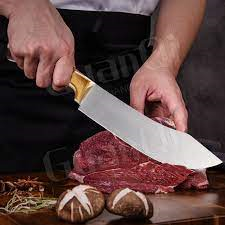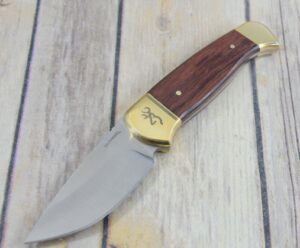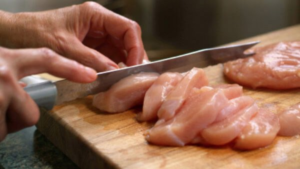
Introduction
Skinning a game animal is an essential skill for any hunter, but it’s also one that can be difficult to master. A sharp knife is essential, but there are other techniques that can help you skin an animal quickly and efficiently without damaging the meat.
In this blog post, we’ll discuss some of the fine-tuning techniques that can help you become a master skinner. We’ll also share some tips for choosing and maintaining a high-quality skinning knife from Custom knives.
The key to successful skinning is a sharp knife. A dull knife will make the job more difficult and time-consuming, and it can also lead to mistakes that can damage the meat. In this blog post, we will discuss some fine-tuning techniques for skinning knives that will help you to become a master skinner.
Sharpness
The most important factor in a good skinning knife is sharpness. A sharp knife will glide through the hide with ease, while a dull knife will tear and hack at it. This can damage the meat and make it less valuable.
There are a few different ways to sharpen a skinning knife. One popular method is to use a whetstone. To do this, simply hold the knife at a 20-degree angle to the stone and stroke it back and forth. Be sure to alternate sides so that the edge is even.
Another popular method for sharpening a skinning knife is to use a honing steel. To do this, simply hold the steel at a 15-degree angle to the blade and stroke it downward. Be sure to alternate sides and apply light pressure.
No matter which method you choose, it is important to sharpen your skinning knife regularly. A good rule of thumb is to sharpen it after every few uses.

Edge angle
The edge angle of your skinning knife is also important. A steeper edge angle will provide a more aggressive cut, while a shallower edge angle will provide a smoother cut.
For skinning, it is generally recommended to use a shallower edge angle. This will help to prevent tearing the meat. A good starting point is a 15-degree edge angle.
Blade movement
When skinning an animal, it is important to use smooth, controlled strokes. Avoid sawing or jerking the blade, as this can damage the meat.
The best way to move the blade is to use a long, smooth stroke. Start at the top of the animal and work your way down, following the contours of the body.

Use the whole blade
Don’t just use the tip of your blade. Make sure to use the entire blade to make long, smooth strokes. This will help to speed up the skinning knife process and reduce fatigue.
Follow the Contours of the Animal
When skinning an animal, it is important to follow the contours of the body. This will help to prevent tearing the meat.
To do this, simply follow the natural lines of the animal’s body. For example, when skinning a deer, you would follow the line of the spine and the belly.

Use a gut hook
A gut hook is a helpful tool for opening the animal’s abdominal cavity. However, it is important to use it carefully. If you are not careful, you can puncture the intestines, which will spoil the meat.
Simply insert the tip of the hook into the abdominal cavity and pull it downward. Be sure to keep the blade away from your stomach.
Conclusion
With practice, you can develop the skills and techniques necessary to skin a game animal quickly and efficiently. By following the tips above, you can fine-tune your skinning knife techniques and become a master of the craft.
Additional tips
Here are a few additional tips for fine-tuning your skinning knife techniques:
- Use a good quality skinning knife. A cheap knife will not stay sharp and will make the job more difficult.
- Keep your knife clean. Wipe it down after each use to prevent rust and bacteria buildup.
- Be careful not to cut yourself. Skinning an animal can be dangerous, so always wear gloves and take your time.
- Practice makes perfect. The more you skin, the better you will become at it.
Bonus tip
If you are skinning a large animal, it may be helpful to use a skinning saw to remove the larger pieces of skin. This will make the job easier and help to prevent fatigue.


